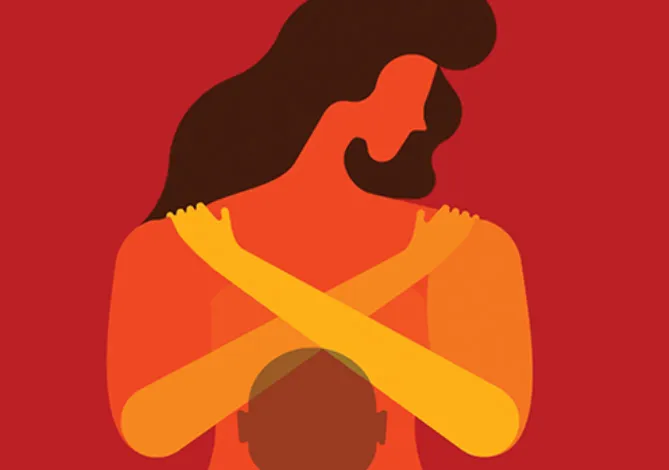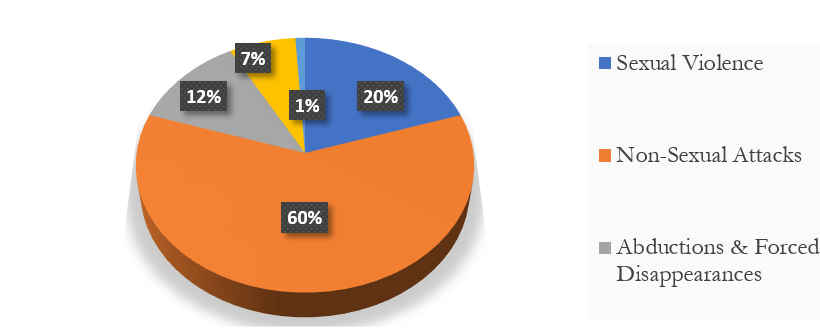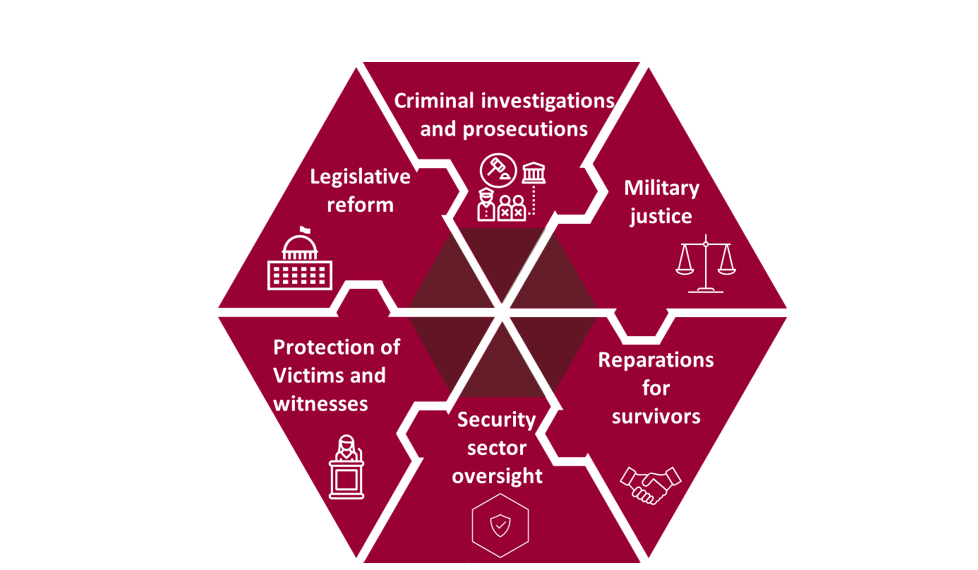-
CENTRES
Progammes & Centres
Location
Given the predicaments women are put through in conflict zones, the International Day for the Elimination of Violence against Women is a compelling reminder to tackle these pervasive issues

The impact of warfare on community structures is deep-seated, influencing wellness, health, education, and holistic progress. With the intensifying conflicts throughout Europe, West Asia, and Africa, the repercussions of war go far beyond the frontlines. What unfolds in these settings is a community wrestling with extensive ruin, which is not only felt in the short term but casts a long shadow over prospects for recovery and enduring peace. In such zones lies an even more susceptible group—women, with data showing that one in three have faced violence in their lifetime. Their vulnerability magnifies under such duress, subjecting them to distinct health hazards that are both unique and alarming. According to the United Nations (UN) estimates, the conflict settings housed around 600 million women and girls, showing an increase of 50 percent compared to 2017. However, the estimates show that the outbreak of military conflict in the region in the past year has further exposed women to gender-based violence, as in the case of Sudan, where more than 4.2 million women and girls are at risk. Given the predicaments women are put through in conflict zones, the International Day for the Elimination of Violence against Women on 25 November is a compelling reminder to tackle these pervasive issues with utmost sincerity and with urgency.
Their vulnerability magnifies under such duress, subjecting them to distinct health hazards that are both unique and alarming.
Violence against women and girls (VAWG) is one of the most constant, prevalent, and ruinous breaches of basic human rights. For example, in Vietnam, the financial repercussions of such violence were believed to account for 1.4 percent of its GDP. Similarly, in Morocco, it is reckoned that about US$308 million is forfeited each year owing to physical and sexual violence. Women and girls in conflict areas grapple with an array of tribulations that imperil their physical and psychological health. The unremitting menace of hostility shatters their everyday existence, curtailing access to vital necessities like medical care. This precarious landscape hems their prospects for economic advancement, fuelling a relentless spiral into impoverishment. Moreover, women find themselves disproportionately afflicted by acts of violence, which encompass sexual abuse, familial aggression, and being sold into coercion against their will. For instance, in the Democratic Republic of the Congo, Haiti, and Sudan, it was reported that the army and armed groups continued to abduct women for sexual exploitation, while Yemen, Somalia, and Syria reported cases of sexual slavery and forced marriages to fighters.
Figure 1: Various Types of Attacks in which Women/Girls are the Target of Violence

Source: The Armed Conflict Location & Event Data Project (ACLED)
These predicaments result in profound bodily and mental effects that range from malnutrition, trauma, the spread of infectious diseases through sexual contact, involuntary conceptions, intense stress reactions after a harrowing event, and melancholic states. Amid strife, vital health provisions are frequently interrupted, posing a significant challenge for females in obtaining necessary medical attention during pregnancy, both before and after childbirth. This includes care of reproductive health as well as ongoing treatment for persistent ailments. In some cases, pregnant women had to go through deliveries without painkillers and used period-delaying medications due to the unavailability of sanitation infrastructure due to the conflict. The absence of such critical services has the potential to escalate avoidable fatalities among women and girls. It can compound risks associated with feminine hygiene, gestation and delivery while also exacerbating the medical conditions of women battling long-term diseases.
The absence of such critical services has the potential to escalate avoidable fatalities among women and girls. It can compound risks associated with feminine hygiene, gestation and delivery while also exacerbating the medical conditions of women battling long-term diseases.
An all-encompassing structure of global legal mandates is in place, focused squarely on the issue of VAWG in regions torn by strife. Instruments like CEDAW, Resolution 1325, the Rome Statute, the Geneva Conventions, and the Belem do Pará Convention take an unequivocal stand against VAWG and present strategies for its outright abolition. Nevertheless, a palpable disparity between their intended aspirations and actual results persists. The reasons behind these insufficiencies unfurl in several shapes. To effectively narrow the divide between legal provisions and their actual deployment to aid the cause of preserving women’s health in conflict zones requires a multifaceted tactic.
Figure 2: Areas of Policy Intervention Identified by the Office of the Special Representative of the Secretary-General on Sexual Violence in Conflict (OSRSG-SVC)

Source: OSRSG-SVC
All too often, the narratives shaping healthcare policies in conflict zones sideline female perspectives. When women are not given their deserving seat at the high-stakes table, where calls to action about their well-being are made, it hinders their capacity to address their unique demands robustly. For the effectiveness of legal instruments, nurturing the involvement of societal blocs and female collectives throughout the policy lifecycle, from gauging necessities to critiquing program effectiveness, must be encouraged. Investing in enabling native women to helm and engage within decision corridors, guaranteeing strategies are sculpted to fit the precise landscape and requisites for the security of women and girls would ensure context-specific nuances and the sustainability of policy implementation. Such conditions can cultivate a cooperative ethos amid neighbourhood actors, governing bodies, and global entities to exchange insights, proficiency, and support networks.
The implementation of effective interventions to address the health-related rights and impacts of conflict on women is often hindered due to the inadequate funding and resources available in conflict-affected settings. Redirecting sufficient funds and resources towards initiatives aimed at incorporating and ensuring women’s security with a keen focus on quelling the conflict is essential. With a lens attuned to the elimination of violence against women and girls, fiscal moves must be evaluated for their impact on preserving women’s safety and access to health needs and locating voids in resource allocation, crying out for attention. Such endeavours must stand as resolute in intent and resilient through execution and impactful results. By inviting investment into precisely tailored interventions while ensuring thorough oversight over fund utilisation, it is possible to offer more than band-aid solutions, providing holistic care where it is most urgently needed.
There is often a lack of accountability and monitoring mechanisms to ensure that governments and international organisations are effectively implementing regulations and laws aimed at protecting women’s health in conflict zones. This lack of oversight allows for gaps in implementation and makes it challenging to identify and address shortcomings. It is vital to craft intricate observation strategies to oversee the enactment of global directives related to women’s sexual and reproductive health. International organisations including the WHO must periodically evaluate the progress and focus on enhancement as it helps in achieving an array of human rights from education to the right to health. Further, these entities can leverage information and proofs collected via such supervision to guide rearrangements in policymaking and the distribution of assets. Setting up procedures for candid disclosure and communal broadcast of inspection outcomes to promote transparency and responsibility is also necessary.
There is often a lack of accountability and monitoring mechanisms to ensure that governments and international organisations are effectively implementing regulations and laws aimed at protecting women’s health in conflict zones.
While taking these legal protocols from paper to practice has proven rather thorny, it necessitates a united push for elevating female narratives, the staunch defence of their entitlements, and rigorous pursuit of retribution against aggressors. Ensuring the elimination of VAWG and access to healthcare during armed conflicts demands strategies inclusive of deterrence, safeguarding measures, responsibility enforcement, and commitment to continuous growth. Bolstering statutory constructs, fostering community empowerment, addressing necessities, and committing to budget approaches sensitive to gender-specific needs facilitate realising an environment where the health entitlements of women are safeguarded. With evidence proving that women’s leadership in political decision-making processes improves them, there is a need to enhance equal participation. As expressed by former Secretary-General of the UN Kofi Annan, empowering women is an effective development tool, which was central under India’s G20 presidency and advocated for National Gender Strategies. Taking this initiative of “women-led development” forward is imperative in creating a world where their perspectives garner attention and their overall welfare stands at the forefront of priorities.
B. Poornima is a Junior Research Fellow and Doctoral Candidate at the
Kiran Bhatt is a Research Fellow at the Centre for Health Diplomacy,
Prof Dr Sanjay Pattanshetty - Professor and Head of the Department of Global Health Governance and Coordinator of Centre for Health Diplomacy at Prasanna School of Public Health, Manipal Academy of Higher Education.
The views expressed above belong to the author(s). ORF research and analyses now available on Telegram! Click here to access our curated content — blogs, longforms and interviews.

Kiran Bhatt is a Research Fellow at the Centre for Health Diplomacy, Department of Global Health Governance, Prasanna School of Public Health, Manipal Academy of ...
Read More +
Dr. Sanjay M Pattanshetty is Head of theDepartment of Global Health Governance Prasanna School of Public Health Manipal Academy of Higher Education (MAHE) Manipal Karnataka ...
Read More +